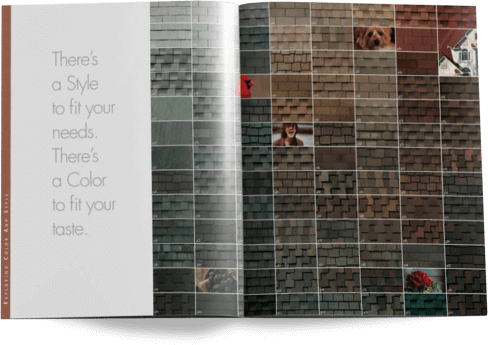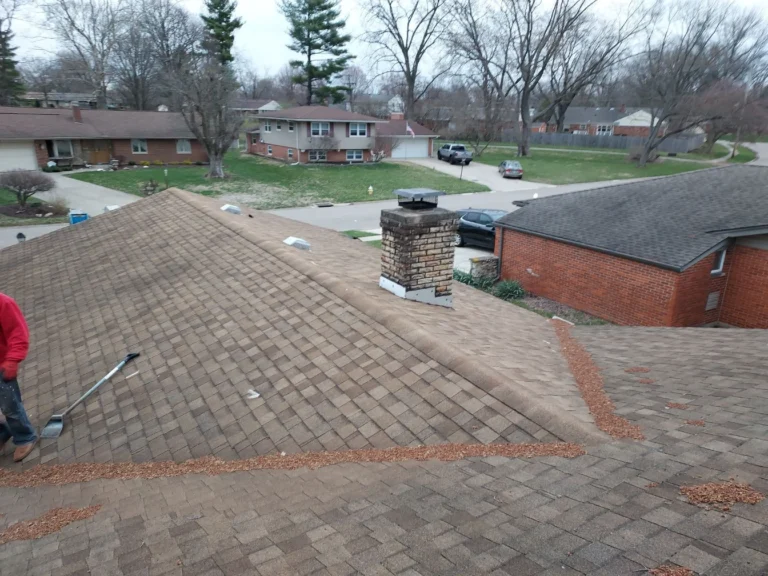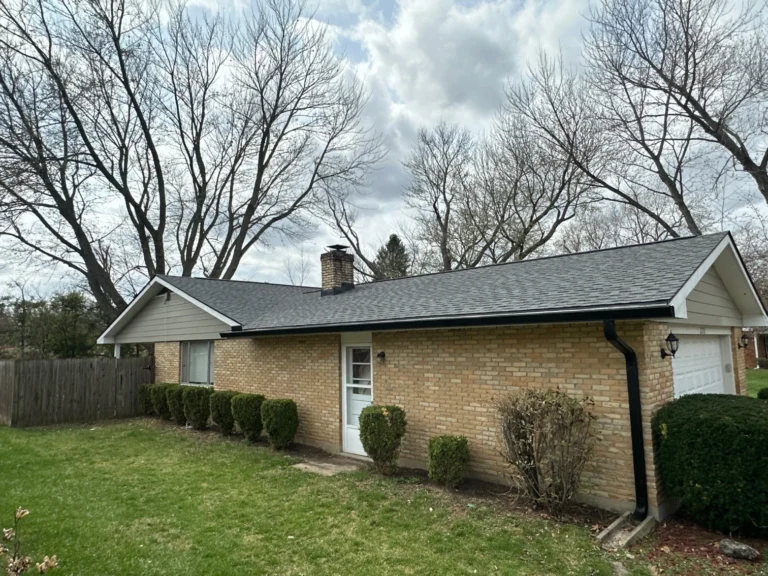How Extreme Temperatures Impact Roof Durability
Estimated Read Time:
- 2 minutes

A roof is more than just a protective covering for your home—it’s your first defense against the elements. But when exposed to extreme temperatures, even the most durable roofing materials can weaken over time. In places like Miamisburg, OH, where weather conditions fluctuate between hot summers and frigid winters, understanding how temperature extremes affect roof durability is key to protecting your investment.
This article breaks down the effects of heat, cold, and rapid temperature changes on roofs, while offering strategies to extend the lifespan of your roofing system.
Heat and Sun Exposure
High temperatures and prolonged sun exposure can cause significant wear and tear on a roof. Asphalt shingles, one of the most common roofing materials, may dry out and lose their protective oils when exposed to constant heat. This leads to cracking, curling, and granule loss, which reduces the roof’s ability to protect your home.
Metal roofs, while highly durable, also expand under extreme heat. Without proper installation and ventilation, this expansion may weaken fasteners or cause warping over time.
UV rays intensify the damage, breaking down roofing materials at a molecular level. This not only reduces curb appeal but also impacts structural performance.
Freezing Temperatures and Snow
Cold weather presents a different set of challenges. Freezing temperatures cause roofing materials to contract. Over time, repeated cycles of freezing and thawing create small cracks that expand, eventually leading to leaks.
Snow accumulation adds weight to a roof, especially if ice dams form. Ice dams occur when melting snow refreezes along the roof edge, trapping water behind it. This water can seep beneath shingles, damaging insulation, ceilings, and even the interior walls of a home.
Roofs in cold climates also face the risk of frost damage, which accelerates material breakdown and weakens the overall structure.
Rapid Temperature Fluctuations
Perhaps the most damaging factor for roofs is the constant shift between hot and cold, known as thermal shock. In Miamisburg, OH, it’s common to experience warm afternoons followed by freezing nights. These swings cause roofing materials to repeatedly expand and contract, stressing the system.
Thermal shock can loosen fasteners, weaken flashing, and shorten the lifespan of shingles, tiles, or panels. It’s one of the leading causes of premature roof failure in areas with unpredictable weather patterns.
Moisture and Humidity Concerns
Extreme temperatures often go hand-in-hand with high humidity. Heat combined with humidity can promote mold growth beneath shingles and in attic spaces. In cold months, condensation may form inside poorly ventilated attics, causing rot and weakening the roof decking.
Moisture-related issues are often hidden until significant damage occurs, making regular inspections essential. Proper ventilation and underlayment systems are crucial in preventing moisture from shortening your roof’s lifespan.
Impact on Different Roofing Materials
Different roofing materials respond to temperature extremes in unique ways:
- Asphalt Shingles: Prone to cracking, curling, and losing granules under heat or thermal shock.
- Metal Roofing: Expands in heat and contracts in cold, requiring secure fasteners and proper installation.
- Tile Roofing: Heavy and durable but can crack under sudden freeze-thaw cycles.
- Flat Roofs (Membrane Systems): More susceptible to ponding water and UV degradation.
Understanding how your roof material reacts to Miamisburg’s climate helps you take preventive measures before problems arise.
Preventive Maintenance Strategies
The good news is that homeowners can take steps to protect their roofs from extreme temperatures. Some of the most effective strategies include:
- Regular Inspections: Schedule professional inspections at least twice a year, ideally before winter and after summer.
- Proper Ventilation: Adequate attic ventilation helps regulate temperature and prevents condensation.
- Quality Underlayment: Provides a second line of defense against water infiltration caused by ice dams or heavy rain.
- Routine Cleaning: Remove debris, trim overhanging branches, and ensure gutters are clear to prevent water buildup.
- Timely Repairs: Address small cracks, missing shingles, or loose flashing immediately before they escalate.
When to Consider Roof Replacement
Even with maintenance, every roof has a lifespan. If you notice widespread damage, significant leaks, or energy bills that keep climbing due to poor insulation, it may be time to consider replacement.
A new roof not only provides peace of mind but also boosts curb appeal and improves energy efficiency. For Miamisburg homeowners, replacing an aging roof before another season of extreme weather hits is often the best long-term investment.
Professional Guidance Matters
While DIY maintenance is possible, working with experts ensures your roof is properly evaluated and protected. Professional roofers understand how local weather patterns affect roofing materials and can recommend the best solutions for long-term durability.
CPM ROOF in Miamisburg, OH, provides expert roofing services tailored to withstand Ohio’s harsh climate. To learn more about maintenance or replacement options, call 937-860-2925 and speak with a trusted roofing specialist.
Protecting Your Home Year-Round
Extreme temperatures are unavoidable, but the damage they cause doesn’t have to be. By staying proactive with inspections, maintenance, and professional support, you can significantly extend the life of your roof.
Your roof is one of the most important investments in your home—make sure it’s protected against the elements for years to come.










